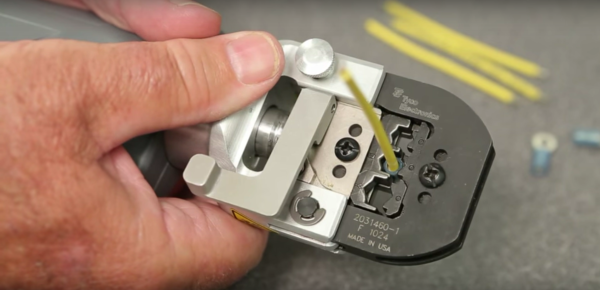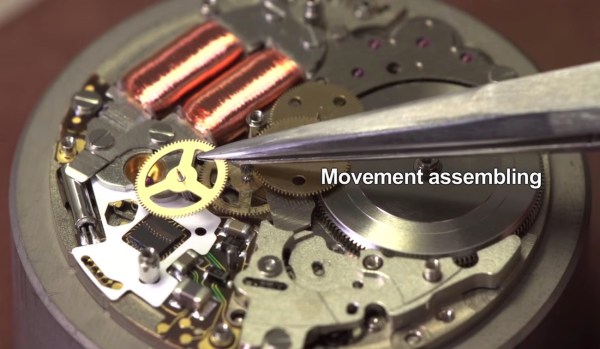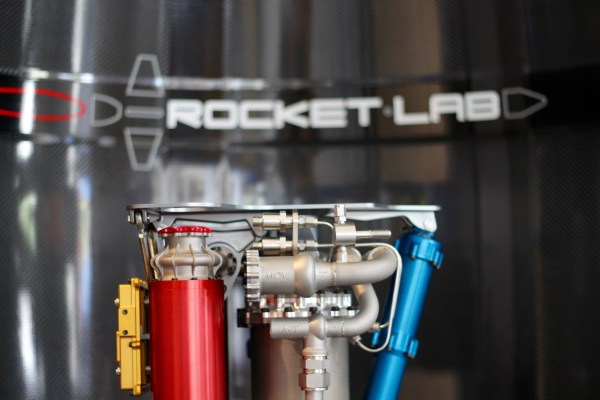It’s widely known that a smoke detector is a good ionizing radiation source, as they contain a small amount of americium-241, a side product of nuclear reactors. But what about other sources? [Carl Willis] got hold of an old Soviet era smoke detector and decided to tear it down and see what was inside. This, as he found out, isn’t something you should do lightly, as the one he used ended up containing an interesting mix of radioactive materials, including small amounts of plutonium-239, uranium-237, neptunium-237 and a selection of others. In true hacker fashion, he detected these with a gamma ray spectroscope he has in his spare bedroom, shielded from other sources with lead bricks and copper and tin sheets. Continue reading “Soviet Era Smoke Detector Torn Down, Revealing Plutonium”
Correct Horse Battery Staple: The Book
XKCD 936, the comic that introduced the phrase, ‘correct horse battery staple’ into both the lexicon and password dictionaries, is the best way to generate a password. Your passwords should be random phrases of random words, hopefully with a few random numbers or symbols sprinkled about. It’s the most entropy you can get that’s also easy to remember.
However, generating your own ‘correct horse’ password is generally a bad idea. Humans are terrible at coming up with random bits of information. Thankfully, the EFF has come up with a wordlist containing 7,776 random words (65, or five rolls of a six-sided die.) ready for the next time you reset a password.
[m145mcc] thought the EFF’s word list should be a book, so he made it a book. With the clever application of a laser printer, glue, thread, and some card stock, [m145mcc] has a handy password generator that fits in his pocket. All that’s needed to build a password is a single die, a pen, and some patience.
The EFF’s random passphrase list is based off [Arnold Reinhold]’s Diceware list from 1995, but has a few changes to make the list easier to use and more palatable for the audience they’re going for. Most significantly, vulgar words were removed from the Diceware list, as the netsec crowd doesn’t swear as a rule. Additionally, numbers were removed, along with rare and unusual words. The passwords generated by the EFF’s list are longer, but they are arguably more memorable.
Despite the idea of a random dice-based password list being around for two decades, there are few if any examples of this list in dead tree format. The idea of a bound version of this list is a great idea, and we’re glad [m145mcc] could bring it to the table.
Good In A Pinch: The Physics Of Crimped Connections
I had a friend who was an electronics assembly tech for a big defense contractor. He was a production floor guy who had a chip on his shoulder for the engineers with their fancy book-learnin’ who couldn’t figure out the simplest problems. He claimed that one assembly wasn’t passing QC and a bunch of the guys in ties couldn’t figure it out. He sidled up to assess the situation and delivered his two-word diagnosis: “Bad crimp.” The dodgy connector was re-worked and the assembly passed, much to the chagrin of the guys in the short-sleeved shirts.
Aside from the object lesson in experience sometimes trumping education, I always wondered about that “bad crimp” proclamation. What could go wrong with a crimp to so subtly futz with a circuit that engineers were baffled? How is it that we can rely on such a simple technology to wire up so much of the modern world? What exactly is going on inside a crimped connection anyway?
Continue reading “Good In A Pinch: The Physics Of Crimped Connections”
Keeping Time With A Spring Powered Integrated Circuit
Watch aficionados have a certain lust for mechanical watches. These old school designs rely on a spring that’s wound up to store energy. The movement, an intricate set of gears and other mechanical bits, ensures that the hands on the watch face rotates at the right speed. They can be considered major feats of mechanical engineering, with hundreds of pieces in an enclosure that fits on the wrist. They’re quite cheap, and you have to pay a lot for accuracy.
Quartz watches are what you usually see nowadays. They use a quartz crystal oscillator, usually running at 32.768 kHz. These watches are powered by batteries, and beat out their mechanical counterparts for accuracy. They’re also extremely cheap.
Back in 1977, a watchmaker at Seiko set off to make a mechanical watch regulated by a quartz crystal. This watch would be the best of both words. It did not become a reality until 1997, when Seiko launched the Spring Drive Movement.
A Blog To Watch goes through the design and history of the Spring Drive movement. Essentially, it uses a super low power integrated circuit, which consumes only 25 nanowatts. This IC receives power from the wound up spring, and controls an electromagnetic brake which allows the movement to be timed precisely. The writeup gives a full explanation of how the watch works, then goes through the 30 year progression from idea to product.
Once you’ve wrapped your head around that particularly awesome piece of engineering, you might want to jump into the details that make those quartz crystal resonators so useful.
[Thanks to John K. for the tip!]
The SmallSat Launcher War
Over the last decade or so the definition of what a ‘small satellite’ is has ballooned beyond the original cubesat design specification to satellites of 50 or 100 kg. Today a ‘smallsat’ is defined far more around the cost, and sometimes the technologies used, than the size and shape of the box that goes into orbit.
There are now more than fifty companies working on launch vehicles dedicated to lifting these small satellites into orbit, and while nobody really expects all of those to survive the next few years, it’s going to be an interesting time in the launcher market. Because I have a sneaking suspicion that Jeff Bezos’ statement that “there’s not that much interesting about cubesats” may well turn out to be the twenty first century’s “nobody needs more than 640kb,” and it’s possible that everybody is wrong about how many of the launcher companies will survive in the long term.
Coding As A Foreign Language
How many of you speak more than one language? Since Hackaday is an English-language site whose readership is world-wide, we are guessing quite a lot of you are not monoglots. Did you learn your second or third languages at school, and was it an experience you found valuable? How about your path into software? If you are a coder, were you self-taught or was your school responsible for that as well?
It’s been a constant of the last few decades, officials and politicians in charge of education worrying that tech-illiterate children are being churned out of schools ill-equipped for the Jobs Of Tomorrow, and instituting schemes to address the issue. One of the latest of these ideas has come our way from Florida, and it’s one that has sparked some controversy. It sounds simple enough, make coding equivalent to language learning when it comes to credits in Floridian high schools.
You might think that this idea would be welcome, but instead it has attracted criticism from those concerned that it will become an either-or choice in cash-strapped school districts. This could lead to kids without an extra language being at a disadvantage when it comes to applying for higher education. There are also concerns that the two subjects are not equivalent, and should not be conflated.
It’s difficult from the perspective of an adult technical journalist without a background in education to speculate on the relative benefits to young minds of either approach. It is very likely though that just as with previous generations the schools will discover that there is limited benefit in pushing coding at kids with little aptitude or interest in it, and that the benefits in terms of broader outlook and intellectual exercise gained by learning another language might be lost.
Which was more valuable to you at school, coding or learning a language? Were you of the generation that learned coding through BASIC from the manual that came with your home computer, and should today’s kids be doing the same with Scratch and Python on boards like the Raspberry Pi? Let us know in the comments.
Child at computer image: Nevit Dilmen [CC-BY-SA-3.0], via Wikimedia Commons.
Metalworking Hacks Add Functionality To Snap-On Tool Chest
Problem: you’re a student mechanic and you’ve already poured a ton of money into a Snap-On roller cabinet loaded with the tools of the trade, but you still need sensible storage for your cordless tools. Solution: a DIY version of Snap-On’s PowerCab cordless tool station at a fraction of the cost.
 Mechanics seem to have a love-hate relationship with Snap-On tools. Some love the brand, others hate it, but the majority seem to hate that they love the tools. It sounds like [GenTQ] reached her limit on brand loyalty when even her 50% student discount wasn’t enough to entice her to add Snap-On’s admittedly very cool KRL1099 cabinet for cordless drivers and chargers. So it was off to Harbor Freight for their seven-drawer side cabinet for less than $200. The cabinet was gutted of drawers, a frame for the new slide-out was welded up, and sheet steel was fabricated into organizer shelves and a new drawer front. A power strip and drag-chain were added to feed the chargers, and the new drawer went off to the powder coater for a matching paint job.
Mechanics seem to have a love-hate relationship with Snap-On tools. Some love the brand, others hate it, but the majority seem to hate that they love the tools. It sounds like [GenTQ] reached her limit on brand loyalty when even her 50% student discount wasn’t enough to entice her to add Snap-On’s admittedly very cool KRL1099 cabinet for cordless drivers and chargers. So it was off to Harbor Freight for their seven-drawer side cabinet for less than $200. The cabinet was gutted of drawers, a frame for the new slide-out was welded up, and sheet steel was fabricated into organizer shelves and a new drawer front. A power strip and drag-chain were added to feed the chargers, and the new drawer went off to the powder coater for a matching paint job.
It may not have the Snap-On badge, and purists may cringe at the mixed-marriage with Horror Fright, but we like the results just fine. And she saved something like $1200 in the process. We think Harbor Freight gets a bad rap, deservedly so for some tools, but there are hidden gems amid the dross just ripe for the hacking, as [GenTQ] ably shows.
[via r/DIY]

















